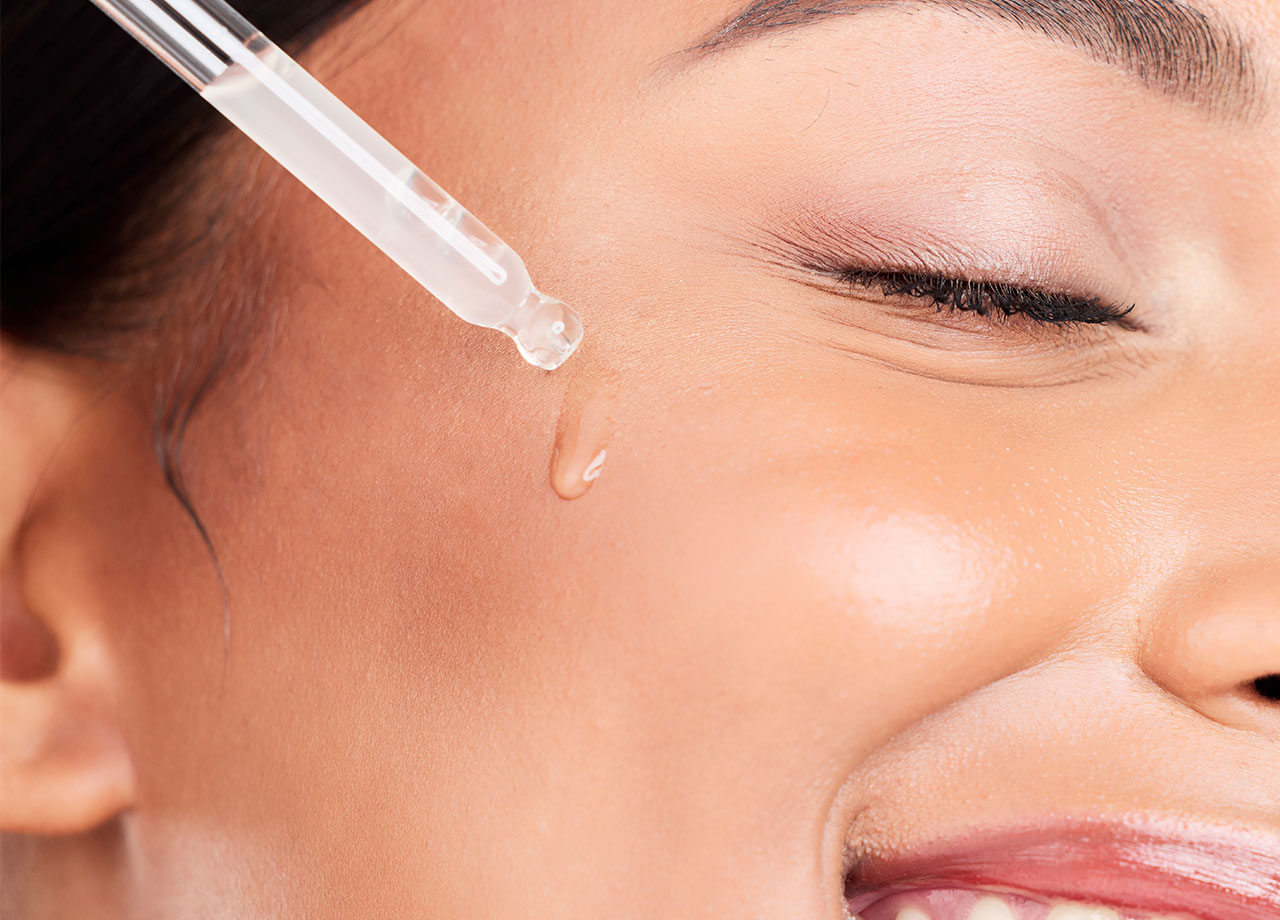The word on everyone’s lips when it comes to anti-aging procedures is “botox,” followed by up “dermal fillers.” But while these procedures can soften fine lines and wrinkles and fill in gaps of volume loss (and fill in some wrinkles as well), neither of them address a common and, for many, frustrating concern: sagging skin.
Skin sags with age and It happens to everyone — it’s completely natural and normal. As we lose collagen and elastin, the skin becomes less able to “spring back” and you may notice more softness in the face and a relocation of facial fat moving more downward. We’re going to be honest here: there isn’t a perfect solution that doesn’t involve surgery. But if you want to avoid surgery like facelifts at all costs, the best defense is a smart skincare routine that incorporates a few key ingredients and techniques, and if you’re open to it, a procedure in a highly skilled and qualified dermatologists’s office.
Here are 10 ways to restore elasticity and protect against aging.


Apply Sunscreen Daily
No other tip matters if the first one isn’t being followed: wear sunscreen and wear it daily. Sunscreen and avoiding UV light without protection (including UPF clothing and a hat) is your best defense against all of the most prominent effects of aging, including sagging skin, discoloration and sunspots, and wrinkles. Apply SPF 30 each day and then remember to re-apply it every two hours if you’re out and about (sooner if you’re spending time in the water).

Incorporate Peptides into Skincare
A skincare routine that includes serums or moisturizers with peptides helps boost collagen production, improve the skin barrier, and improve hydration. These outcomes lead to healthier, more taut skin that has a moisturized and smooth texture.

Sleep Well
Prioritize getting a good night’s sleep — it helps repair your skin cells, increase skin cell turnover, boost collagen production, and relieve stress and inflammation. Think of it as the best exfoliator your skin can get. Aim for between 7-8 hours of quality sleep and eliminate any distractions from your bedroom to help — these can include sources of blue light and noises (a white noise machine may help.

Drink Water
We sometimes make fun of celebrities who claim their flawless skin is the result of drinking lots of water and using olive oil masks. This may not be all that they’re doing, but it’s no reason to knock either of these helpful things, either. Drinking enough water daily helps flush out waste and toxins in the body and keeps your skin well hydrated, which makes it look better, plain and simple.

Develop a Skincare Routine
This tip may seem obvious but creating a personalized skincare routine that includes products you deem most effective for your skin and sticking to it with consistency is a good habit to help maintain healthy skin texture. You don’t have to spend a fortune to create a routine, though some active ingredients may be more costly than other products. Start with a gentle cleanser, hydrating moisturizer, and an active serum like vitamin C. Ask your dermatologist about OTC retinol and start off slowly using it a few times a week.

Use Retinol
Speaking of retinol, it’s one of the only skincare ingredients that has numerous studies backing its efficacy over a long-term period. A quality retinol, which usually means one prescribed by a dermatologist, boosts collagen production, increases the rate of skin cell turnover, can minimize the appearance of fine lines and wrinkles, helps firm sagging skin and prevents more sagging, and unclogs pores for fewer acne breakouts. It’s not a miracle (though it sounds like one) and it takes time to notice skin improvements, but it’s one of the most effective skincare ingredients out there.

In-Office Skin Tightening Procedures
They cost money and some time, but several in-office procedures can help tighten the skin and improve skin texture. These procedures include microneedling, microneedling with radio frequency, thermage, and ultherapy. It’s important to find a skilled, highly qualified dermatologist to perform these procedures and to speak to them about whether you are a good candidate for the treatment. Tempering your expectations is key to enjoying the results.

Eat a Healthy Diet
The same way experts say you can’t outrun a poor diet, you also can’t avoid the fact that a diet filled with vitamins, minerals, proteins, and healthy fats supports your skin’s health, protects against inflammation and UV damage, and helps balance skin oil production. Aim for a variety of foods that contain important nutrients such as vitamin C, vitamin E, omega-3 fatty acids, niacinamide, and protein.

Exercise Regularly
Regular physical activity helps tone muscles and improves blood flow and circulation, which supports collagen and elastin production for tighter, healthier skin. Try incorporating a mix of cardio and strength training to gain the most benefits from your workout.

Facial Massage
Daily facial massage encourages the movement of lymph fluid, and this can help flush out toxins and reduce puffiness. It also stimulates collagen production, promotes blood flow to the skin, and can improve your skin’s overall texture and tone. Not to mention: it feels great.

























